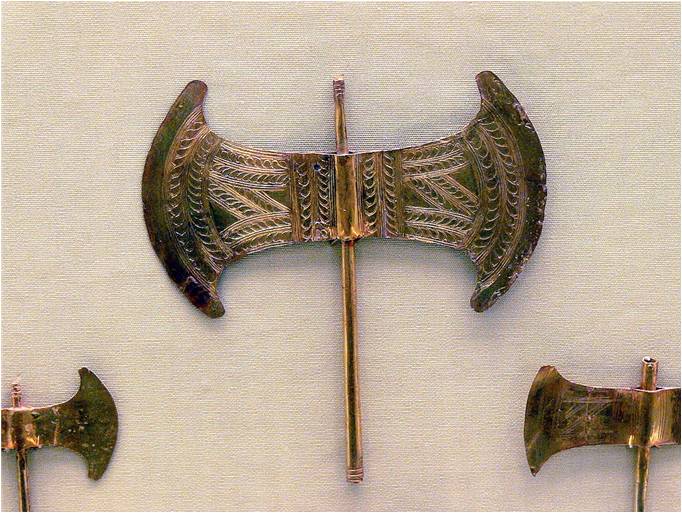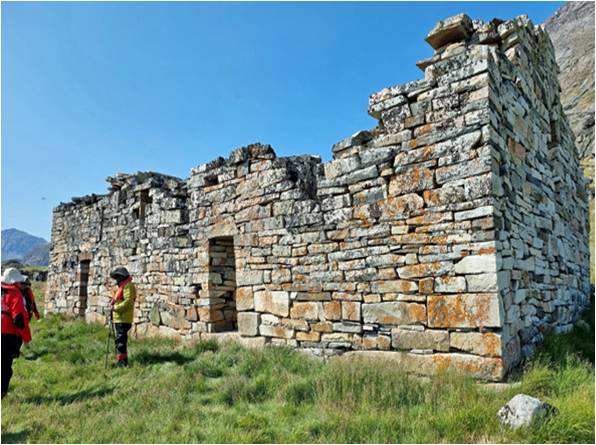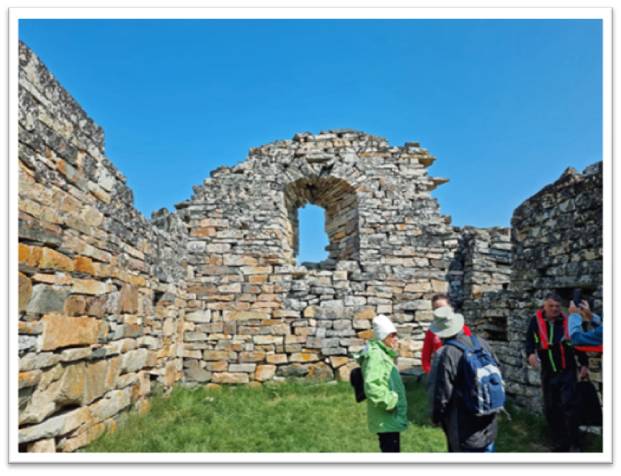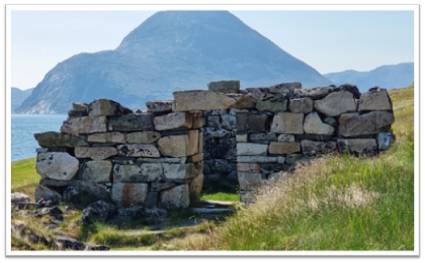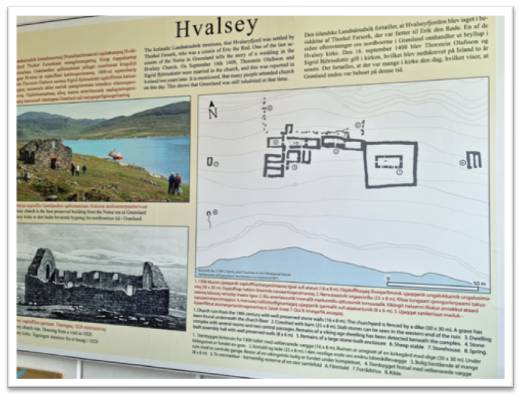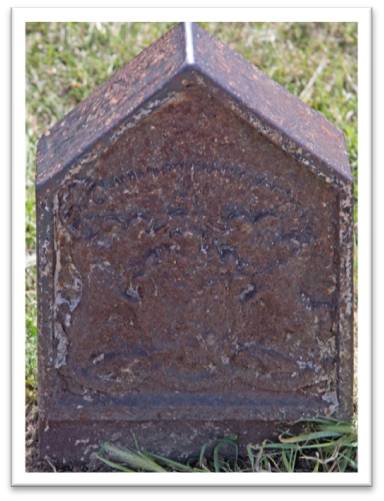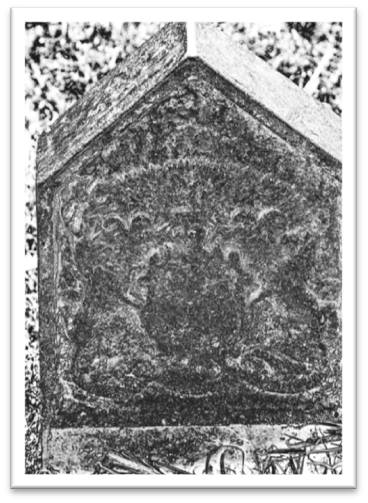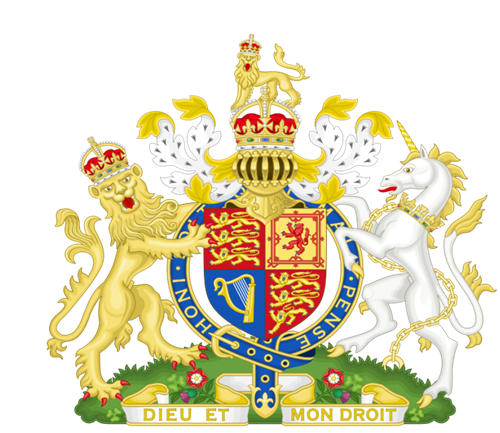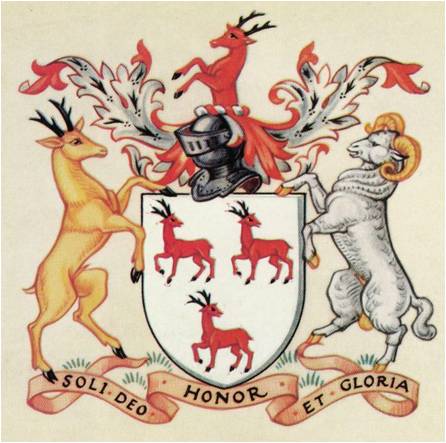
No. 633 December 2023 Edited by Don Cooper
After what is proving to be a difficult year with conflicts everywhere, we
would like to take this opportunity to wish all our readers a Merry Christmas
and Healthy, Happy, Prosperous and PEACEFUL 2024.
HADAS Diary -Forthcoming Lectures and Events
Without a lecture in December or January, we have arranged an afternoon tea to welcome the New Year and for you to meet up with other members. It would be lovely to see everybody and of course, friends and partners too. Sunday, 21st January,2024. 2.30pm to 5.30pm. Avenue House, 17 East End Road, N3 3QE. £20 per person includes Finger Buffet (and tea/coffee) – Good company, cash bar – Raffle – Quiz. Booking details on separate sheet / attachment sent with newsletter.
Tuesday, 13th February 2024. TBA
March 12th March 2024 The Battle of Teutoburg Forest AD 9: The Massacre of a Roman
Army. A Talk by Robin Densem
Tuesday, 9th April 2024 Traders, Bargees, Ferrymen and a Seagull; Life and Work in Roman Pisa. A talk by Ian Jones, Chairman Enfield Archaeological Society
Tuesday, 14th May 2024 Roman London’s tools, a talk by Owen Humphreys.
The Minoan Double Axe by David Willoughby
There are many unanswered questions about the Minoans who dominated the Aegean, from their bases in Crete in the early Bronze Age. This is in part due to the fact that the writings they have left us in their Linear A script remain undeciphered. Some burning questions are : What are their origins? What language did they speak? What were their religious beliefs and practices and what was the significance of the double axe symbol (Labrys) which is commonly associated with Minoan sites?
1
Excavations commenced in 1934 on the Arkalochori cave (which had collapsed in antiquity). This cave is located on the western edge of the Minoa Pediada plain, west of the Lasithi plateau on Crete. It is believed to be a sacred cave associated with the Minoan Palace of Galatas (Rethemiotakis, 1999).
The excavations revealed hundreds of bronze double axes, twenty-five gold ones and seven silver ones. The axes included the second-millennium bronze ‘Arkalochori axe’ with its unusual undeciphered script showing some similarities to Linear A. Also discovered was a hoard of bronze swords and a small altar (Blegen, 1935). Pottery sherds in the cave enabled the deposits in the cave to be dated from the late third millennium BCE to around 1500 BCE (LM II). Similar bronze double axes have been found at the Diktian (Psychro) sacred cave among other gifts or offerings such as miniature vessels and figures of humans and animals (Preziosi & Hitchcock, 1999) and the finds in both caves indicate the axes were deposited as votive offerings. Bronze double axes have also been found in tombs (Evans, 1914).
The double axe has been discovered in many Minoan contexts. It often appears as mason marks, for
example in palatial pillar crypts on the pillar itself. Bronze double axes have been found embedded in stalactites in caves and frescoes show double axes embedded in column capitals. It has been suggested that these pillar crypts may mimic sacred caves with the pillar being a baetyl (sacred stone) representing an aniconic cult statue (Preziosi & Hitchcock, 1999). Double axes appear on sealings (e.g. on a MMII B cretule sealing from Phaistos) and panels on the LMIII A Sarcophagus from Haghia Triada apparently depict burial ceremonies and with two double headed axes mounted on stepped bases between which is a container, into which women are pouring offerings (Preziosi & Hitchcock, 1999). Also depicted on the sarcophagus is a scene showing bull sacrifice.
The double axe features in several other Bronze Age cultures where it is often associated with the storm or thunder god e.g., the Hurrian god Teshup (adopted by the Hittites and Luwians as Tarhun) who is associated with the bull as a sacred animal https://www.britannica.com/topic/Tarhun.
In classical times the Greek god Zeus uses the double axe to invoke a storm (Nilsson, 1967) and the
Diktian cave was the centre of the worship of Zeus with a hymn to the god having been found in
excavations at Palakastro www.explorecrete.com/mythology/dictaean-zeus-hymn.html. Evidence in
2
Linear A tablets may indicate that a ‘Diktaian master’ was a Minoan precursor to classical Diktaian Zeus (Valerio, 2007).
Plutarch states that the Lydian word for double axe was ‘labrys’ (Plutarch) and many (including Arthur Evans) have suggested that the word ‘Labyrinth’ means ‘place of the double axes’ (The Oxford Classical Dictionary, 2012) but this cannot be proved (Beekes).
The double axe appears to have had great significance to the Minoans and it can be postulated that perhaps that it and even the bull iconography (including the horns of consecration) are associated with an important deity in the Minoan religious pantheon, the storm god, who later became equated with Zeus. There is however, no proven iconography depicting the god himself to support this and indeed double axes are usually associated with female figures, perhaps representing priestesses.
Bibliography
Beekes, R.S.P. Greek Etymological dictionary, 819.
Blegen, E. P. (1935). News items from Athens. American Journal of Archaeology 39, 134.
Evans, A. (1914). The ‘Tomb of the Double Axes’ and Associated Group, and the Pillar Rooms and Ritual Vessels of the ‘Little Palace’ at Knossos. Archaeologia, 65, 1-94.
https://www.britannica.com/topic/Tarhun (n.d.). Retrieved from https://www.britannica.com
Nilsson, M. (1967). Die Geschichte der griechischen Religion (Vol. I). Munich: Beck Verlag.
Plutarch. (n.d.). Greek Questions, 45, 2.302a.
Preziosi, D, & Hitchcock, L.A. (1999). Aegean Art and Architecture. Oxford University Press.
Rethemiotakis. (1999). To neo minoiko Anaktoroston Galata Pediados kai to ‘Iero Spilaio’ Arkalochoriou.
A. Karetsou, ed. Krites Thalassodromoi, 99-111.
The Oxford Classical Dictionary (4th ed.). (2012). Oxford: Oxford University Press.
Valerio, M. (2007). ‘Diktaian Master’: A Minoan Predecessor of Diktaian Zeus. Kadmos – Zeitschrift für
vor- und frühgriechische Epigraphik, 3-14.
www.explorecrete.com/mythology/dictaean-zeus-hymn.html (n.d.). Retrieved from
www.explorecrete.com
Vikings in Greenland July 2023 by Don Cooper
In early July 2023 Liz and I visited Greenland on a cruise ship as part of a holiday that included Iceland and Greenland. What attracted us to the trip was to see the physical remains of the settlement of Greenland by the Vikings.
According to the Norse sagas Eric the Red byname of Erik Thorvasson was exiled from Iceland, possibly having been found guilty of manslaughter in circa AD 980. He sailed to Greenland, where he explored the coastline and claimed certain regions as his property. He then returned to Iceland to persuade people to join him in establishing a settlement in Greenland. The Icelandic sagas say that 25 ships left Iceland with him in AD 985, and that only 14 of them arrived safely in Greenland. Radiocarbon dating of the remains at the first settlement at what is now called Qassiarsuk have approximately confirmed this timeline, yielding a date of about AD 1000. There are five areas in South-West Greenland with known early Viking remains in and among more modern sheep farms. The areas contain well-preserved landscapes with ruins of farmsteads from the period AD 985-1450. These five settlements were acknowledged collectively as a World Heritage Site in 2017.
Qassiarsuk grew from about 500 to a maximum of 3000 settlers between c.AD 1000 and AD 1450. As Christianity spread through Europe, replacing the old gods, churches began to be built across the region.
3
One such church was at Hvalsey built c. 1300 AD, the remains of which are still standing. See my photos below.
4
5
There is a continuing mystery as to why the settlement failed. There are many theories. In all likelihood it is a combination of them. The last document securely dated records the marriage of Sigrid Bjornsdottir and Thorstein Olafsson on Sunday 16th September 1408 in Hvalsey church. Is it relevant that Greenland came under Denmark in AD 1380 when the Norwegian kingdom came under the Danish crown? The settlement was completely abandoned by c:1450. The main theories are:
- Climate change – The exceptionally cold weather of the so called “Little Ice Age” made farming life unsustainable. The North Atlantic became more stormy and according to the website
What really happened to Greenland’s vikings? | [Visit Greenland!] the last ship returned from Greenland to Norway in AD 1410. - Plague – the Black Death devastated Norway with up to 60% of the population dying of it and
although the plague didn’t reached Greenland, trade with Norway was seriously curtailed and the provision of bishops and priests to support the church in Greenland ceased as all the bishops and most of the priests in Norway died of the plague. - Ivory from Walrus tusks: This theory is propounded by Tim Folger in the Smithsonian Magazine in
March 2017 (https://www.smithsonianmag.com/history/why-greenland-vikingsvanished180962119/#:~:text=The%20Vikings%20established%20two%20outposts,north%2C%20called%26vanished180962119/#:~:0the%20Western%20Settlement.) The gist of the article is that the reason the Vikings settled in Greenland was not just farming, but harvesting walrus ivory, which was valuable, as this was before elephant ivory reached the European market and collapsed the price. - Innuits – The Innuits arrived in Northern Greenland c: AD 1200 and gradually extended southward
to the small Western Viking settlement. Did they fight with the Vikings or intermingle peacefully? The only reference according to the website, Greenland – The Official Tourism Site | Visit Greenland! is of a “clerical steward who visited the settlement around 1350 and wrote that the Inuit had taken over the entire Western settlement, but frustratingly did not elaborate on this.”
6
It is clear that both parties shared the same resources, so the possibility of conflict exists. Whichever theory you support it still remains a mystery as to why the Vikings vanished from Greenland in the 1400s.
The Worshipful Company of Leather Sellers in Barnet by David Willoughby
A little while ago I had an article published in the HADAS newsletter that referenced a cast iron boundary marker at the bottom of Barnet Hill, near the site of the now demolished Old Red Lion pub. This marker is very worn but close examination reveals a coat of arms of two creatures supporting a shield. I postulated at the time that this might represent the royal coat of arms featuring a lion rampant and a unicorn rampant, with the shield surmounted by a helmet and a crest of a crown surmounted by a lion.
I conjectured that this marker might be associated with the improvement of the road from Whetstone to Barnet by the Whetstone and Highgate Turnpike Trust in 1823.
In a recent online forum this particular boundary marker was discussed and one of the participants was sure that the coat of arms represented that of the Worshipful Company of Leathersellers. Their coat of arms features a roebuck rampant and a ram rampant supporting a shield with a demi roebuck crest above the shield. The rational of thinking it was related to the Leathersellers is that they own a lot of historic freehold in Barnet, including the almshouses at Leathersellers Close and of Barnet Odeon (Everyman), the BP garage and possibly, still the freehold of the new houses by the grass verge where the marker is located and which are on the site of the Old Red Lion pub.
7
This is a very credible and more likely explanation and looking closely at the coat of arms on the enhanced photograph, it does resemble that of the Leathersellers, in particular, the shape of the motto at the bottom. It is a shame though, that the boundary marker is too worn to be a hundred percent sure about the identification.
Other Societies’ Events by Eric Morgan
Not all societies / organisations have returned to pre-covid conditions. Please check before attending.
Tuesday 9th January, 6.30 pm. LAMAS. Venue T.B.A. Also on Zoom. Buy Tickets via Eventbrite. Non-members £2.50. Life, Death and Worship at H.M. Tower of London. Talk by Alfred R.J. Hawkins (Assistant Curator of Historic Buildings) will discuss the History and Archaeology of The Chapel Royal and Royal Peculiar of St. Peter Ad Vincula (Parish Church of The Tower) and include a chronology of the development of the building. The Archaeological excavations (2019) and subsequent analysis of skeletal remains exhumed. For details and link please visit www.lamas.org.uk/lectures.html.
Tuesday 9th January, 8pm. Amateur Geological Society. Talk on Zoom. Essex Rocks – Geology Beneath the Landscape. By Ian and Ros Mercer (Essex Rock and Mineral Society) on the deep history of Essex from 500 million years ago to the current ice age and the continuing geological processes and planning for the future. For further details and link please visit www.amgeosco.wordpress.com.
Wednesday 10th January, 2.30 pm. Mill Hill Historical Society. Trinity Church, 100 The Broadway, NW7 3TB. The Festival of Britain. A talk by David Bunell. www.millhill-hs.org.uk.
Friday 12th January, 7.30 pm. Enfield Archaeological Society. Talk on Zoom. A virtual Tour of the Maritime Greenwich World Heritage Site. By Jane Sidell (MOLA). Please visit www.enfarchsoc.org for further details and link.
8
Thursday 18th January, 7.30 pm. Camden History Society. Talk on Zoom. The Destruction of Eton’s Chalcot Estate. By Peter Darley (Camden Railway History Society). It resulted from a V1 Flying Bomb that landed nearby. Talk will explore the origins of the estate and the aftermath in terms of planning and reconstruction. Please visit www.camdenhistorysociety.org for details and link.
Thursday 18th January, 8.00 pm. Historical Association. Hampstead and N.W. London Branch. Fellowship House, 136A, Willifield Way, NW11 6YD (off Finchley Road, Temple Fortune). Masada. Talk by John Levy. Hopefully, also on Zoom. Please email Gulse Koca (Chair) on kocagulse@gmail.com or telephone 07453 283090 for details of the zoom link and how to pay (There may be a voluntary charge of £5) Refreshments available afterwards.
Friday 19th January, 7.00 pm. C.O.L.A.S Talk on zoom. The Enderby Bark Shield. By Dr Sophia Adam (from the British Museum). A new and rare find from the Iron Age. Please book via Eventbrite. Visit www.colas.org.uk. HADAS may send out the link details to its members.
Thursday 25th January, 7.30 pm. Finchley Society, Drawing Room, Avenue (Stephens’) House, 17 East End Road, N3 3QE. Battle of Barnet. Talk by Paul Baker (Barnet Local History Society) for further details. Visit www.finchleysociety.org.uk. Non-members £2 at the door. Incl. refreshments.
Thanks to our contributors, Don Cooper, Eric Morgan, David Willoughby.
Hendon and District Archaeological Society
Chairman Don Cooper, 59 Potters Road, Barnet, EN5 5HS
(020 8440 4350) e-mail: chairman@hadas.org.uk
Hon. Secretary Janet Mortimer, 34 Cloister Road, Childs Hill, London NW2 2NP
(07449 978121) e-mail: secretary@hadas.org.uk
Hon. Treasurer Roger Chapman 50 Summerlee Ave, London N2 9QP
(07855 304488) e-mail: treasurer@hadas.org.uk
Membership Sec. Jim Nelhams 61 Potters Road Barnet EN5 5HS
(020 8449 7076) e-mail: membership@hadas.org.uk
Web site: www.hadas.org.uk


